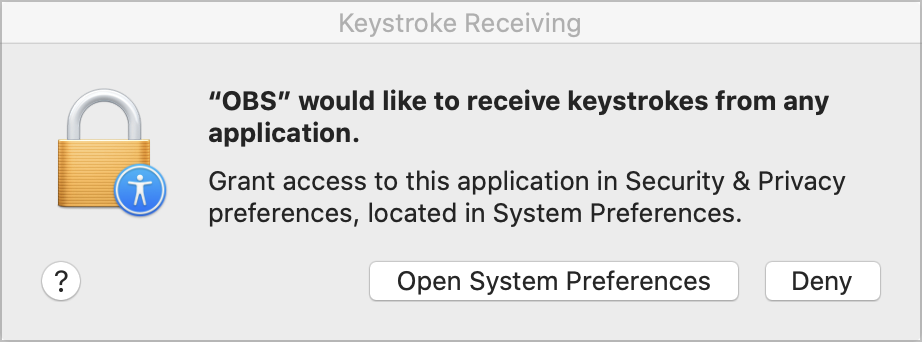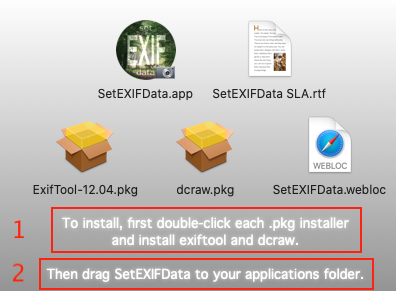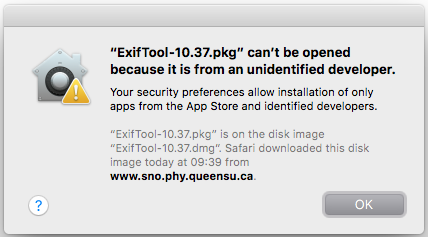Posted on 2005-06-07 09:42:06-07 by macosx
Is there information for beginners like myself who are trying to get startedwith Apple's Terminal and Perl and ExifTool all at the same time.I am really only interested in one feature at the moment and thatis extracting JPEGs from CANON RAW image files.I have tried to follow the directions but I have been unsuccessful and it's gettingquite painful. I would appreciate tutoringas my real work is photography and not computer programming.
-John
Naked Cutie - Sindy Black 51469. We have provided this list to facilitate information about local groups and meetings, please note that only those who are legally adults are permitted to attend sa meetings, orgphone 1 615-370-6062toll-free usa canada 866-424-8777fax 1 615-370-0882 1997-2021 sexaholics anonymous inc. The third host you may use is Adobe Photoshop Elements (PSE) in its versions 6 through 15 as well as 2018, 2019, 2020 and 2021. For installation instructions detailing what to install where please refer to ColorPerfect's Intel Mac ReadMe file. Note that 64 bit hosts exclusively work with Colorperfect and not with our legacy plug-ins. Mac OS X 10.15 Catalina has dropped support for XMLs with the iTunes app, now called Music. The Sonos software looks for an XML file for importing playlists out of iTunes. Because of this, music libraries shared with Sonos will not be able to find playlists that are created in or updated with the new Music app. Your Bluetooth MAC is like the previous MAC address except it is for Bluetooth. Again, it can be used to track you as manufacturers and operating system makers keep logs of such information. It could be tied to a sale place/time/date or accounts and then could be used to track you with such information, the shop billing information, the CCTV.
Posted on 2005-06-07 13:03:40-07 by exiftool in response to 592
It is really simple. Here are the steps:
1) Using your favourite browser (ie. Safari), download the latest version of exiftoolfrom http://owl.phy.queensu.ca/~phil/exiftool/ to your desktop.
2) Open a terminal window (by running 'Terminal' from the /Applications/Utilities folder).
3) In the terminal window, type the following:
(Note: Replace '5.25' with the version number you actually downloaded.)
4) Assuming your Canon RAW file is on the desktop and named 'Canon.CRW',type the following to extract the JPEG image:
Or if your Camera produced .CR2 format RAW files, you need to extract the PreviewImage instead:
You should now have a file called 'Canon_JFR.JPG' on your desktop.This is the JPEG extracted from the CRW or CR2 file.
5) If you want to transfer the EXIF information from the originalRAW file to the extracted JPEG, type the following:
(or use Canon.CR2 if the file was CR2 format)
That's about it. If you want, you can follow the instructions in theREADME file to do a standard installation. Then you won't have to specifythe exiftool directory on the command line.Note that some MacOS systems don't have the required Perl header files to dothe 'perl Makefile.PL' step. Instead, you can just copy 'exiftool'and the 'lib' directory to anywhere in your PATH(type 'printenv PATH' in the terminal window to show your PATH directories).
Let me know if you have any troubles.
Posted on 2005-09-22 23:30:19-07 by dayo in response to 593
Hello.
I am pretty much in the same situation as the original poster in that as a recent Mac adopter,I don't know very much about terminal etc so your response is very welcome.Some additional questions.
1. In the example you gave (Point 4) was is the step if the file not on the desktop.How to you specify the path to it.
2. The main reason I am interested in this tool is that I want to create Exif datafor TIFF files from a scanner. Is this possible?
3. If it is, can I write into the exposure fields such as shutter speed, Aperture etc.I have scans using a Minolta Scan Dual III and have all the exposure data for eachshot as I used a Minolta Dynax 7 that allows me to output text files with this data.
4. I have checked and know that the file properties section of my scannedfiles do not have fields for aperture etc. Is it possible to create these fields in aTIFF files that doesn't have one? Perhaps transfer from one image that has then to these ones?
5. I noticed that some other post had something about lenses from the Minolta Dynax 7D.I am a hybrid shooter as in addition to the Dynax 7, I own a Minolta Dynax 7D and a Dimage A2.Are the raw files from these units supported?
Sorry for the number of queries and thanks for your assistance.
Posted on 2005-09-23 00:59:51-07 by exiftool in response to 1028
I'll answer your questions as best I can:
1) You can prefix any filename by the path where it is located.Directory names are separated by '/'. A complication is that on the Mac it iscommon to have spaces and sometimes other funny characters in directory and file names.This complicates things a bit on the command line because if this happensyou have to either put quotes around the whole name or put a ' before each space character.
So for instance, if the image was in my '/Users/phil/Pictures' directory, and assumingexiftool is in the current directory, I could type the following to extract the previewinto a directory called 'Previews' in the root directory of my boot disk:
Hints: The '~' character used above is a short form for your home directory name,which is '/Users/phil' in my case. Also, it makes typing a lot fasterif you know about 'tab completion': It is usually not necessary to typean entire directory name -- once you have typed a few characters,press the 'tab' key and the rest of the name will be completedunless there is another directory beginning with the same sequence of characters.
2) Yes, you can add EXIF information to any TIFF file (as well as a number of other file types).
3) You can write all the information you mention, plus a lot more.
4) You can either create this information from scratch, or copy it from another image.Whichever is easiest for you.
5) ExifTool should work on MRW images from any Minolta camera.I have tested it personally with raw files from the 7D and A2.
I hope this helps.
Posted on 2005-09-23 10:03:06-07 by dayo in response to 1029
Thanks a million for the quick reply. I'll give it a bash.I'll go get a book and educate myself on using Terminal.
Funny that I am quite competent with the DOS Prompt in Windows and often write complexbatch files but if I thought I could migrate my knowledge intuitively to Terminal,I couldn't have been more mistaken. I'll correct this oversight.
Looking at some of the other posts with references to excel etc.I suppose it is possible to write a series of tags to be loaded into an externalfile and have the program loop through a series of files and update them.However, I need to learn the basics first.
Thanks again, the hints were particularly useful
Posted on 2006-12-19 17:47:19-08 by pedroparamo in response to 593
I realize this is an old post but I'm just starting to install and use exiftool.How do I copy the 'exiftool' and the 'lib' directory to my PATH?
Pedro
Posted on 2006-12-19 18:51:49-08 by exiftool in response to 3839
There are a few ways, and the exact steps depend on the shell you are using.(The default shell is tcsh for OS X 10.3 and earlier, but it changedto bash for OS X 10.4. Which do you use?)
Here are the steps:
1a) If you are using tcsh (the OS X 10.3 default), add the following line to the '.cshrc'file in your home directory. (If '.cshrc' doesn't exist, use '.tcshrc' instead,otherwise create one of these and add the line.)
1b) If you are using bash (the OS X 10.4 default), instead add thefollowing line to the '.bashrc' file in your home directory:
2) Start a new terminal window, and in that window type:
This will create the /usr/local/bin directory and expand the exiftoolfiles in that directory. (You should change the '#.##' to the actualversion number that you downloaded. This command assumes that youhave downloaded it to your Desktop.)
After doing this, you should be able to run exiftool in a terminal windowby just typing 'exiftool'. (Of course, you will have to add optionsand file names on the command line to do what you want after that.)
- Phil
Posted on 2006-12-20 15:46:49-08 by pedroparamo in response to 3846

Thanks. I've got that part done, but when I try to run something like:exiftool -h -refine test/JPEGS/60537-01.JPGI get the error message -bash: exiftool: command not found.

Do I need to be in my local/bin directory when I run exiftool,or my home directory, or does it matter? Pedro
Posted on 2006-12-20 16:55:15-08 by exiftool in response to 3853
If you set your PATH properly, then typing 'exiftool' alone should be good.Here is a bash terminal session showing you how things should be set up:
Try these commands and paste your terminal session if you are still having problems.
- Phil
Posted on 2006-12-20 19:27:48-08 by pedroparamo in response to 3854
I don't think things are set up correctly. My home directory is as follows:
My local/bin directory is:
I'm just guessing but don't I need an exiftool file (folder?)in my local/bin directory somewhere?? I'm assuming that you wanted me torun the commands you sent replacing 'phil' with the name of my homedirectory -- which is 'home' -- here's my terminal session:
Posted on 2006-12-20 20:59:17-08 by exiftool in response to 3859
Hi Pedro,
Thanks. I'm sorry, it's my fault. Expanding the distribution in the /usr/local/bin directory created a subdirector called Image-ExifTool-6.66. The exiftool files have to be moved to the parent directory. ie)
Also, there was some confusion about my terminal session.Everything before the '$' was just part of the prompt, not a command.So my idea there didn't work too well. I wanted you to type the following:
But I think we know now that the 'ls' command wouldn't find exiftool sinceit was in the Image-ExifTool-6.66 sub-directory. Sorry about that.
- Phil
Posted on 2006-12-27 15:50:20-08 by pedroparamo in response to 3860
Hi Phil, I think I've got everything straight, but I can't seem to get exiftool to work.I want to get the exif info of a file in a folder on my desktop 'test/60512F-01.CR2'.When I run (from the terminal window, in the home directory)exiftool -h -test/60512F-01.CR2I get the following error -bash: exiftool: command not foundDoes it matter which directory I am in when I run exiftool?
Thanks. Pedro
Posted on 2006-12-27 17:21:24-08 by exiftool in response to 3907
Hi Pedro,
You need to either type the exiftool directory each time, ie)
~/Desktop/Image-ExifTool-6.66/exiftool -h ~/Desktop/test/60512F-01.CR2
or add the exiftool directory to your PATH. Since you are using bash, it can be done like this:

echo 'export PATH=${PATH}:/Users/USERNAME/Desktop/Image-ExifTool-6.66' >> ~/.bashrc
where 'USERNAME' is your user name. (Just cut and paste the above line as a command in your terminal window, substituting USERNAME appropriately.) Then you must open a new Terminal window for the new PATH to take effect.
Note that both of these examples assume that exiftool is in a directory called 'Image-ExifTool-6.66'. If it is somewhere else just change this to the proper directory name.
(Also, in these examples I have used '~', which is a shorthand for your home directory '/Users/USERNAME' that can be used in commands and filenames.)
- Phil

Posted on 2006-12-27 20:02:04-08 by pedroparamo in response to 3911
Phil, Now I'm a bit confused and I'm not sure where my exiftool is located.My home directory looks like this:
ExifTool-6.66 is located in my /usr/local/bin:
Does this look correct? I added the exiftool directory to my PATH as per your instructions.Should I now be able to run exiftool from my home directory by just typing commands?Or do I need to type exiftool -h ~/Desktop/test/60512F-01.CR2 Thanks for your patience.
Pedro
Posted on 2006-12-27 22:33:00-08 by exiftool in response to 3914
Hi Pedro,
If you have the directory '/usr/local/bin/Image-ExifTool-6.66' in your PATH,then you're good to go with command lines that begin with just 'exiftool'. So typing
exiftool -h ~/Desktop/test/60512F-01.CR2
should do the job. FYI: You can verify your PATH by typing
printenv PATH
but it sounds like you should be good to go.
- Phil
Posted on 2006-12-27 23:57:58-08 by exiftool in response to 3920
Here are a couple more command-line tricks that may be useful to you:
In OS X, you can use the 'open FILE' command at the command line,and it will do the same thing as if you had double-clicked on the file. For example, typing this:
Creates an output HTML file called 'out.html' from informationin the specified image, then opens 'out.html' in your default browser (probably Safari).
Another tip is that you can use the TAB key to avoid a lot of typing.This tip applies to any system, including OS X, Unix and Windows.The TAB will complete any unambiguous partial command or file name,so usually it is only necessary to type the first few characters of each word.For instance, in the above example, what I would actually type is more like this:
where '[TAB]' represents a press of the TAB key.
I sort of take all this stuff for granted now, but I thought it might be useful to mention because you may not know about these tricks yet.
- Phil
Posted on 2007-01-03 16:47:32-08 by pedroparamo in response to 3921
Thanks Phil. Unfortunately I still can't get ExifTool to work.I think that it's either in the wrong place and/orI did not add it to my PATH correctly. My PATH is:
In my home directory--the initial directory which I am in whenI open a terminal session contains the following:
I'm not sure what the exiftool file in my home directory is for?If I change to my /usr/local/bin there is a folder called Image-ExifTool-6.66:
The Image-ExifTool-6.66 folder contains the following:

What is my ExifTool directory? (To clarify, my USERNAME is the loginname I use to login to my computer, right?)
I tried adding the exiftool directory to my path using the directory/Users/Peter/Desktop/Image-ExifTool-6.66 And that did not work.I also tried using the directory /Users/Peter/sbin/Image-ExifTool-6.66But that didn't work either.Can you tell what the problem is?
Thanks again for all your help and patience. Pedro
Posted on 2007-01-03 17:14:37-08 by exiftool in response to 3961
Hi Pedro,
Here are some answers for your questions:
1) The exiftool file in your home directory is extraneous and can be deleted.
2) Your USERNAME is the name you log in with, but my example was assuming that you had ExifTool in your Desktop directory (/Users/USERNAME/Desktop). But instead, your ExifTool directory is actually /usr/local/bin/Image-ExifTool-6.66
To set your PATH to include this directory, cut and paste the following in a Terminal window:
then open a new terminal window. Your PATH (given by 'printenv PATH') should then be:
So the last entry in your path is '/usr/local/bin/Image-ExifTool-6.66'.This is the directory that contains 'exiftool' and it's libraries.If this works, then you should be able to run exiftool by just typing 'exiftool'.
If you have any more questions, please email me (phil at owl.phy.queensu.ca).I don't think it would be useful for others to continue this discussion in the forum.
Thanks.
- Phil
(This article is based on a thread on the CPAN::Forum.)
Published on 2005-06-07
Does Exiftool For Mac Work With Catalina Os
ColorPerfect, Plug-in for Adobe Photoshop, Photoshop Elements and PhotoLine
ColorPerfect (formerly ColorNeg and ColorPos) our plug-in for Adobe Photoshop, Photoshop Elements and PhotoLine is available for both PC and Mac in 64-bit versions as well as the standard 32-bit. It allows the digital editing of all photographic media while maintaining or establishing color integrity. In this it is best to process digital image data directly after digitization or capture. That is so because the currently common image editing tools - be it other software products or imaging processors in digital cameras - are ignorant of color integrity. A shortcoming that eventually triggered ColorPerfect's development.
The three modes: ColorNeg (negatives) | ColorPos (positives) & PerfectRAW (RAW data) | TouchUp
Does Exiftool For Mac Work With Catalina Free
ColorNeg mode allows you to convert scans of color negatives as well as scans or digital photos of black and white negatives into superior quality digital positive images.
ColorPos mode can be used to work on scans of slides and prints as well as on digital photos while also maintaining or establishing color integrity. Since our release of ColorPerfect 2.0 ColorPos mode features the PerfectRAW tool intended for the color correct processing of digital camera RAW data.
ColorPos mode is closely related to ColorPerfect's third mode TouchUp which provides a reduced feature set intended for further processing of pre-edited image files that already have color integrity. TouchUp does not perform an initial adjustment of brightness, color balance and black point.
Get acquainted with ColorPerfect's essential features in our video tutorial today!
We recently set up a system to record tutorial videos which we plan to use more frequently in the future to provide tutorials and demonstrations. Among a few others we currently have an extensive feature overview video. It introduces the most important aspects of ColorPerfect.
This video is offered upon downloading ColorPerfect. Alternatively we put it here, too. You can download the sample image used in it if you like.For subtitles you can also view this on YouTube.Back to the non-YouTube version.
ColorPerfect 2.0 with PerfectRAW excites digital photographers, current state & prospect
A few days after we published ColorPerfect 2.0 a photographer and long term ColorNeg user from Germany wrote to us (translated to English): 'I was very surprised by the difference to the established RAW converters. Not only the color but also the tonal rendition is significantly better. Compared to other RAW converters an image processed with PerfectRAW seems like opening a dirty window to finally get a clear view on the world.'
We are looking forwards to hear what you will say. Despite of the euphoric reactions of our existing users this place also seems suitable to objectify the view on ColorPerfect. We are convinced that ColorPerfect, our concept of complete color integrity and most recently PerfectRAW constitute innovations with the potential to impact digital image editing in general. The road ahead is still long though. Currently several thousand hours of development both resulted in the physical and mathematical foundation and in a market-ready product that is already available to all photographers ranging from professional large format or digital shooters to leisurely photographers today.
ColorPerfect gets embraced by more photographers each day. It provides a finely tuned portfolio of tools which like every complex system takes some time to get acquainted with before it becomes intuitive. The graphical user interface of ColorPerfect for some platforms is less fancy than modern products made by the large corporations and this web page on ColorPerfect is not yet fully comprehensive and will get extended over time.
If you have any questions or whishes please don't hesitate to get in touch via our contact form.
Using ColorPerfect to edit images that no longer have color integrity
The common lack of color integrity in digital images does not mean that ColorPerfect would be generally useless for images captured using a digital camera's JPEG mode or such that have been pre-edited by other software. For such images which no longer have color integrity and for which color integrity is impossible to produce or restore our tools will simply work less well than for images with color integrity. Limited scope adjustments can actually often improve images without preserved color integrity, too. Such images lack the physical relations to allow any major adjustments however and while they can be improved in TouchUp mode they will never match the quality that could be produced using an image editing workflow with color integrity.
Supported versions of Adobe Photoshop, PhotoLine and Adobe Photoshop Elements for PC & Mac
Does Exiftool For Mac Work With Catalina Operating System
On Windows PCs one or both of the 32 and 64 bit plug-in versions of ColorPerfect can be used with Adobe Photoshop 7 through CS6 as well as Adobe Photoshop CC through CC 2021. PhotoLine can also be used as a host. It is fully supported from its release 16 onwards. The third host you may use is Adobe Photoshop Elements (PSE) in its versions 2 through 15 as well as 2018, 2019, 2020 and 2021. For installation instructions detailing what to install where please refer to ColorPerfect's PC ReadMe file. Note that 64 bit hosts exclusively work with Colorperfect and not with our legacy plug-ins.
On Intel Macs using Mac OS X one or both of the 32 and 64 bit plug-in versions of ColorPerfect can be used with Adobe Photoshop CS3 through CS6 as well as Adobe Photoshop CC through CC 2021. PhotoLine can also be used as a host. It is fully supported from its release 16 onwards. The third host you may use is Adobe Photoshop Elements (PSE) in its versions 6 through 15 as well as 2018, 2019, 2020 and 2021. For installation instructions detailing what to install where please refer to ColorPerfect's Intel Mac ReadMe file. Note that 64 bit hosts exclusively work with Colorperfect and not with our legacy plug-ins.
On actual legacy PowerPC Mac hardware Adobe Photoshop 7, CS, CS2, CS3 and CS4, PhotoLine 15 through 17.10 and Adobe Photoshop Elements 2 through 6 are supported for both ColorPerfect and our legacy plug-ins. For installation instructions detailing what to install where please refer to ColorPerfect's PPC Mac ReadMe file.
ColorPerfect, ColorNeg, ColorPos and GamSat can all be unlocked with the same license key
Prior to the release of ColorPerfect we provided three separate plug-ins for Adobe Photoshop: ColorNeg, ColorPos and GamSat. These were replaced by ColorPerfect in 2010. We still offer the old plug-ins along with their original PDF manuals for download. The articles we previously published on GamSat were transformed into a subsection of the ColorPos category of this web site.
Does Exiftool For Mac Work With Catalina
The same license key can be used to unlock our international English plug-ins ColorPerfect, ColorNeg, ColorPos and GamSat for the chosen operating system. A license costs $67.00. If you are located within the European Union that is a net price and the VAT rate applicable for your purchase will be added to that during checkout. To use the plug-ins both under Windows and under Mac OS X separate licenses are required. The license keys of the German versions are not compatible. The links to the secure shop of our distribution partner can be found below the downloads in the right hand side column of this web site.
Grid in the demo plug-in versions
This web site offers fully functional demo versions of the international English plug-ins. The demo plug-in versions of ColorPerfect, ColorNeg and ColorPos generate a grid in the final image. The grid is subtle enough that the results can be evaluated and will go away once you enter your license key which can be purchased via a secure web page as detailed above.
Old plug-ins, PDF manuals and ColorPerfect's built-in help system
Instead of a printable manual ColorPerfect currently features a built-in help system. Users who are familiar with the original ColorNeg or ColorPos plug-in will quickly get acquainted with ColorPerfect. Mastering ColorPerfect by means of the old manuals will likely be more confusing than helpful, so we ask new users to resort to the plug-in's help system right away. To do so please follow the instructions in ColorPerfect's ReadMe.txt file, load the linear scan of a negative or a Tiff file created by MakeTiff from a digital RAW photo in Photoshop, start the plug-in and immediately click on the Help button. Follow the order suggested to read the help texts where applicable.